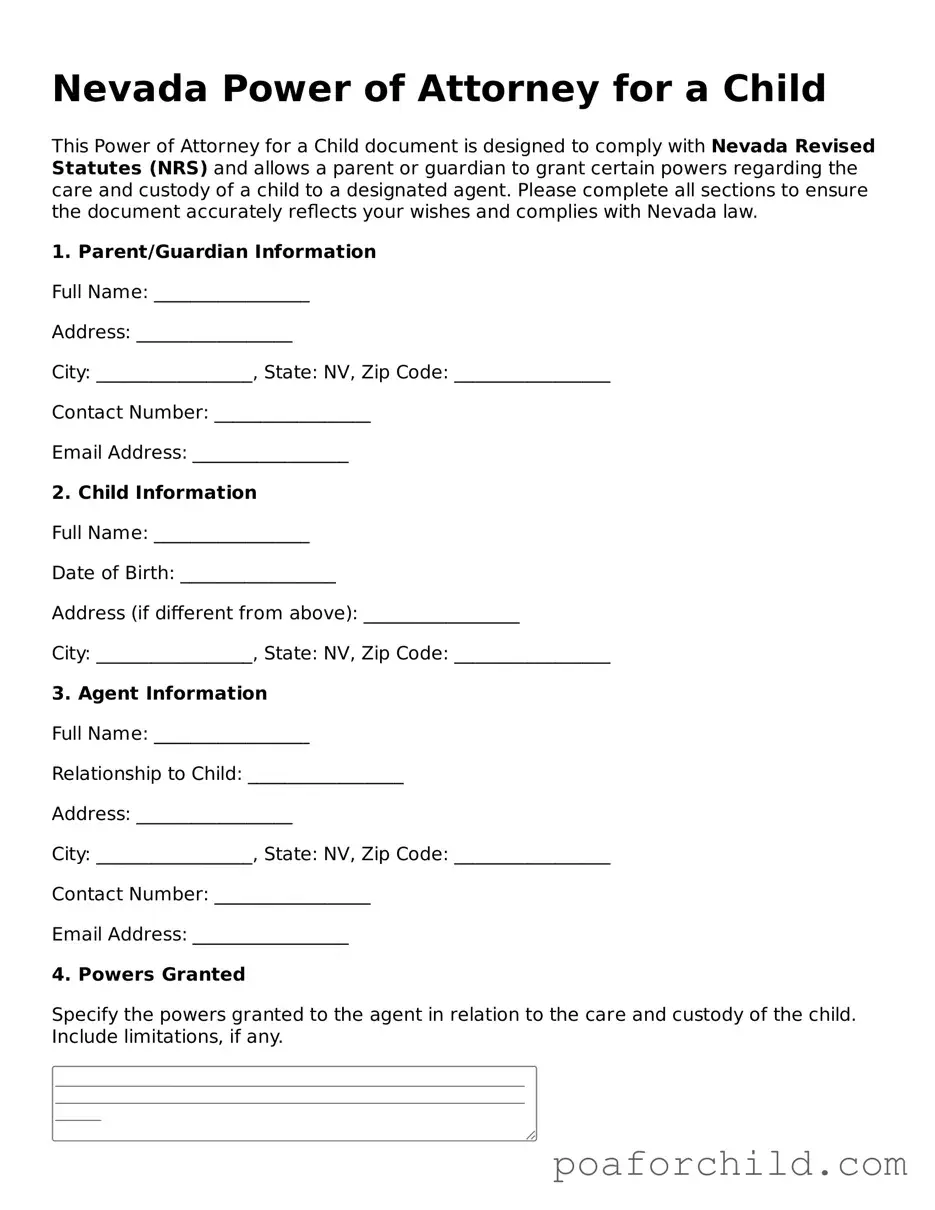Detailed Guide for Using Nevada Power of Attorney for a Child
When tasked with filling out the Nevada Power of Attorney for a Child form, one undertakes a significant responsibility. The form is designed to grant another individual the legal authority to make decisions on behalf of a minor child. This could include decisions about education, healthcare, and other general welfare considerations. It’s crucial to fill out this form accurately and thoughtfully to ensure the child's best interests are served and legal standards are met.
- Start by entering the full name and address of the person appointing the power of attorney (the parent or current legal guardian) at the top of the form.
- Specify the full name and birth date of the child for whom the power of attorney is being granted.
- Identify the individual being granted power of attorney by providing their full name and address.
- Detail the specific powers granted. Make sure to be clear about what decisions the appointee is authorized to make on behalf of the child. This might include decisions regarding education, medical care, or general welfare.
- Indicate the time period for which the power of attorney is valid. Nevada law may limit the duration of such powers, so it's important to be aware of these constraints.
- Both the granting party and the grantee must read the document carefully. Any other conditions or limitations to the powers being granted should be noted clearly in the designated section.
- After reviewing the form to ensure that all information is accurate and complete, the granting party should sign and date the form in the presence of a notary public. The notary will then sign and seal the form, officially notarizing the document.
- Finally, provide copies of the notarized form to the grantee and keep originals in a safe but accessible place. It may also be prudent to share copies with relevant entities, such as the child’s school or healthcare provider, as necessary.
Filling out the Nevada Power of Attorney for a Child form with care is crucial for the well-being of the child involved. It solidifies a trusted individual’s legal authority to make important decisions in the child’s life. Handling this responsibility with attention to detail and legal requirements ensures that the arrangement works as intended for the benefit of the child.
